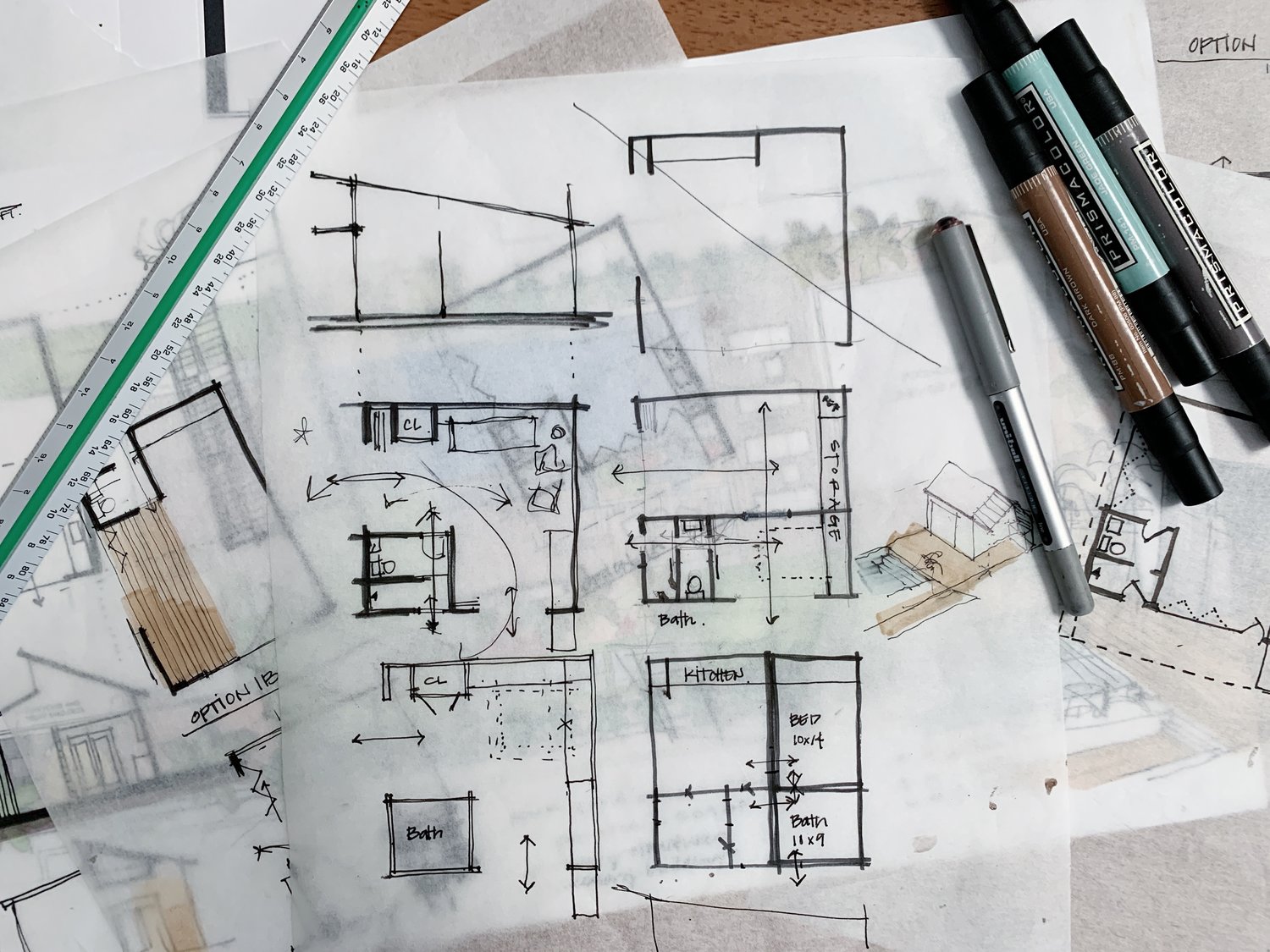Architect Career Path: Skills, Training, and Advancement Guide
Architect Career Path: Skills, Training, and Advancement Guide
Blog Article
Comprehending the Diverse Occupation Paths Available for Aspiring Architect
As an ambitious Architect, you have a world of profession courses awaiting you. Each path offers distinct difficulties and possibilities to use your creative thinking and technical know-how. Whether you're drawn to traditional style or the subtleties of sustainable style, there's a particular niche that straightens with your passions. Comprehending these varied alternatives can shape your professional journey, yet which instructions will you choose to explore initially?
Standard Style: Designing Structures and buildings
Standard design concentrates on developing structures and structures that mix functionality with visual appeal. As you discover this field, you'll appreciate the elaborate equilibrium between form and objective. You'll discover to attract ideas from historic styles, including aspects like symmetry, materials, and craftsmanship. Your designs can show social heritage, showcasing regional traditions while fulfilling contemporary needs.
You'll develop abilities in composing, model-making, and site evaluation, allowing you to envision and communicate your ideas properly. Involving with clients, you'll require to understand their vision and translate it into feasible layouts.
Moreover, developing codes and sustainability methods are vital in your job, guaranteeing your frameworks are risk-free and eco-friendly. As you grow in your job, you'll discover possibilities in domestic, business, or even restoration tasks, each offering special challenges. Accepting typical architecture leads the way for a meeting career that pays homage to the past while shaping the future.
Urban Planning: Forming Communities and Public Spaces
As a hopeful Architect, you can play an important function as a city coordinator, changing just how areas operate and connect. By using community interaction methods, you'll guarantee that locals have a voice fit their atmosphere. Plus, integrating lasting layout principles will certainly assist produce areas that not only satisfy today's requirements however additionally safeguard the future.
Role of Urban Planners
While numerous could assume of architects as the single enthusiasts behind structures, city planners play a vital role in forming the wider landscape of neighborhoods and public spaces. By teaming up with various stakeholders, you'll assist create parks, transportation systems, and domestic locations that promote social interaction and accessibility. Your proficiency in spatial style and community dynamics enables you to picture future growth while protecting cultural heritage.
Neighborhood Interaction Strategies
Efficient neighborhood interaction methods are vital for city coordinators to ensure that the voices of locals are listened to and valued in the planning procedure. To promote meaningful discussion, you need to prioritize open forums and workshops where neighborhood members can express their ideas and worries. By actively integrating and paying attention feedback, you'll develop areas that mirror the area's needs, inevitably leading to more successful and lasting city environments.
Lasting Design Concepts
When designing city spaces, incorporating sustainable layout principles is essential for producing settings that flourish both ecologically and socially. Take into consideration integrating environment-friendly spaces, like parks and yards, to improve biodiversity and boost air top quality.
Designing with water preservation in mind is likewise vital-- consider rainfall yards and absorptive surface areas to manage stormwater. Involving neighborhood members during the planning procedure assurances that the rooms you create satisfy their demands and urge social communication. By welcoming these concepts, you'll add to vivid, lasting metropolitan landscapes that benefit everybody.

Landscape Architecture: Developing Lasting Outside Environments
As you check out landscape design, you'll discover necessary style principles that create useful and lovely exterior rooms. Lasting methods play an essential role in making certain these environments grow while lessening ecological impact. Plus, you'll discover a range of profession opportunities that allow you to make an actual difference in how people interact with nature.
Style Concepts in Landscape
Recognizing style concepts in landscape design is crucial for developing lasting outside environments that harmonize with nature. You'll need to consider aspects like proportion, balance, and range to guarantee your designs feel cohesive and inviting. Furthermore, pay interest to seasonal adjustments, developing with products that complement the surroundings year-round.
Sustainable Practices Overview
Lasting techniques in landscape architecture not only focus on appearances yet also focus on eco-friendly wellness and source preservation. You can design areas that advertise soil wellness, such as making use of natural materials and practicing permaculture principles. Ultimately, these methods ensure your layouts profit both individuals and the environment for years to come.
Profession Opportunities Expedition
With a solid structure in sustainable methods, landscape style supplies a variety of career courses that allow you to make a significant influence on the atmosphere. You could work as a landscape designer, creating aesthetically pleasing and functional outside rooms, or focus on environmental reconstruction, helping to revitalize broken communities. Urban coordinators usually collaborate with landscape architects to develop environment-friendly spaces in urban setups, enhancing city livability. If you're enthusiastic about education, think about coming to be a landscape design educator, inspiring future generations. In addition, you could deal with nonprofits focused on ecological sustainability or participate in research to innovate brand-new methods. Each path not just shapes attractive atmospheres additional hints yet additionally cultivates a much healthier world for future generations.
Lasting Style: Focusing on Eco-Friendly Practices
As you explore your career in architecture, welcoming environmentally friendly practices can establish you apart in a Home Page competitive area. Lasting style concentrates on producing buildings that lessen environmental impact while enhancing resident health. By including renewable materials, energy-efficient systems, and sustainable structure methods, you'll contribute to a greener future.
Begin by getting understanding of environment-friendly certifications like LEED or BREEAM, which can strengthen your credentials. Think about just how all-natural light, air flow, and thermal effectiveness can enhance layout. Team up with designers and environmental consultants to innovate remedies that decrease waste and save sources.
Don't forget the value of neighborhood participation-- engaging local stakeholders can inspire layouts that harmonize with the environment. As customers increasingly prioritize sustainability, your proficiency in environmentally friendly techniques will certainly not just bring in jobs but also fulfill your interest for accountable style. Embrace this critical element of the profession, and watch your occupation grow.
Historical Conservation: Shielding and Restoring Social Heritage
While you commence on your building journey, consider the vital role of historic preservation in preserving our social heritage. This field concentrates on the protection and restoration of significant buildings, websites, and structures that inform the tales of our past. By participating in historical preservation, you'll aid secure the architectural tradition that shapes community identification.
As a historic conservation Architect, you'll evaluate historical significance and analyze the condition of frameworks. You'll work very closely with guardians and historians to assure authentic repair strategies are employed. This job course permits you to blend creative thinking with research study, enabling you to make solutions that appreciate initial products and craftsmanship.
Your work not just contributes to sustainability by recycling existing buildings but also fosters a feeling of pride within areas. Welcoming this course will assist you become a guardian of history, preserving the stories and visual appeals that improve our lives.
Inside Design: Enhancing Indoor Spaces
Historic conservation and interior design both share a commitment to improving the constructed environment, yet they concentrate on various aspects. While historic conservation emphasizes preserving a structure's historic and cultural value, indoor design absolutely nos in on optimizing interior areas for capability and visual appeals.
As an ambitious Architect, you'll discover that interior architecture allows you to blend creativity with technological skills. You'll make spaces that not only look great however additionally advertise convenience and performance. This field entails recognizing exactly how light, shade, and products connect within a space, affecting state of mind and use.
You'll deal with numerous jobs, from domestic homes to commercial workplaces, making certain that each environment meets the needs of its occupants. By prioritizing individual experience, you can change insides into useful and inspiring spaces, making a considerable influence on just how individuals connect with their environments. Embrace the opportunity to improve indoor environments and form the way individuals live and function.
Industrial Layout: Combining Performance With Visual Appeals
Commercial design plays an important duty in creating products that seamlessly mix visual appeals with capability, ensuring that what you utilize day-to-day is not only aesthetically enticing but likewise useful. As an ambitious Architect, view it now you might involve on your own in this area, focusing on developing whatever from furniture to customer electronic devices. Your work includes understanding customer requirements, products, and making procedures, allowing you to develop ingenious services that boost day-to-day experiences.
In commercial layout, you'll typically collaborate with online marketers, producers, and designers, guaranteeing that your styles are not just gorgeous yet likewise viable. You'll find out to balance form and function, prioritizing functionality without giving up style. By sharpening your skills in laying out, 3D modeling, and prototyping, you'll be fully equipped to bring your ideas to life. This occupation path offers a vibrant environment where creativity fulfills functionality, making it a rewarding option for architects interested in shaping the items of tomorrow.
Often Asked Concerns
What Educational Credentials Do I Need to Become an Engineer?
To become an architect, you'll require a professional degree in architecture, usually a Bachelor's or Master's. Additionally, you'll need to finish a teaching fellowship and pass the Architect Registration Evaluation to practice legally.
Are There Accreditation Demands for Various Building Career Paths?
Yes, there're qualification demands for various building paths. Architect. You'll need to pass exams, full teaching fellowships, and occasionally seek specialized training, depending upon your picked emphasis, like landscape design, urban design, or historic conservation
What Software Abilities Are Vital for Designers Today?

Exactly How Can I Gain Practical Experience While Examining Style?
You can obtain sensible experience by interning at building firms, taking part in layout competitions, offering for community projects, or collaborating with classmates on real-world jobs. These opportunities boost your skills and construct valuable links in the market.
What Job Opportunities Exist Outside Typical Design Firms?
You can discover various work chances outside conventional style firms, like urban preparation, interior decoration, landscape design, building administration, realty advancement, and even roles in sustainability consulting. Each offers distinct obstacles and rewards.
Whether you're drawn to conventional design or the subtleties of lasting layout, there's a specific niche that aligns with your rate of interests.When creating urban rooms, incorporating lasting design concepts is vital for creating settings that prosper both environmentally and socially.As you discover landscape design, you'll discover crucial style principles that develop stunning and functional outside spaces.Comprehending layout principles in landscape design is crucial for developing sustainable outside environments that balance with nature.In commercial design, you'll commonly work together with designers, manufacturers, and online marketers, guaranteeing that your designs are not only beautiful yet likewise viable.
Report this page